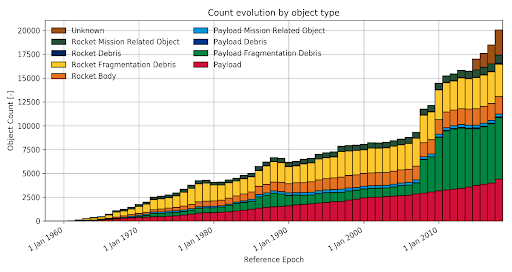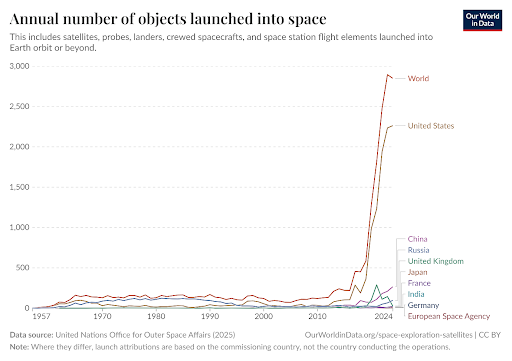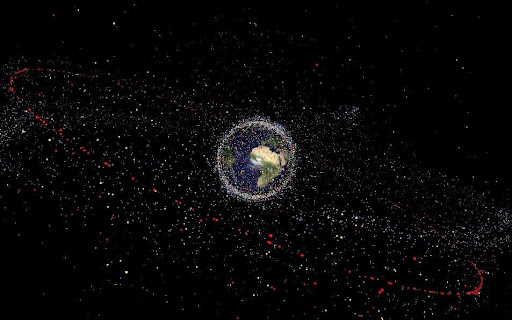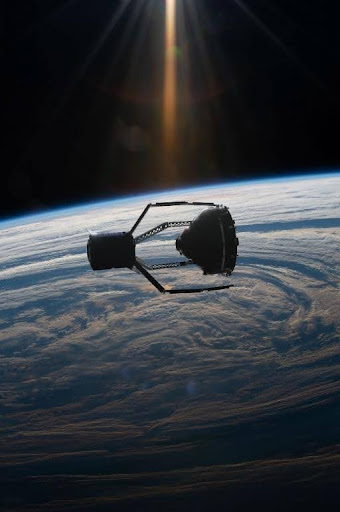Million of years ago, life on Earth took the bold leap to step on land, a historical evolution which set in motion the evolution of early terrestrial animal life forms. Today it not only dares venture beyond Earth itself but has rather mended the opportunities in space to the best of its use. Amidst the cheer, however, a concerning issue is on the rise. Space debris not only endangers our current ambitions it also raises the question of security and viability of future missions. Timely action is now an urgent necessity.
Satellites have revolutionized the way we look at the world. These satellites continue to develop our understanding of our own Earth and the universe in the best way possible. At Space India, in “Space Explorers Workshop”, and “Space Satellites”, Students learn about various types of satellites that have many different uses that including communication, weather forecasting, navigation, and a lot more. They investigate what is a satellite and learn about the basic parts of the satellite by assembling these parts to make a model of a satellite. This fosters satellite education among young learners.
Debris in space? What is it exactly?
According to the Space Debris Mitigation Guidelines adopted in 2007 and issued by the Committee on the Peaceful Uses of Outer Space (COPOUS), ‘Space Debris’ refers to all man-made objects, including fragments and elements thereof, in Earth orbit or re-entering the atmosphere, that are non-functional. In simpler words, it refers to defunct satellites, swirling parts of rockets, paint flecks, and an array of fragments arising from our past endeavours which are no longer under our control. It is also generated by the collision of objects in space and explosions- including anti-satellite tests in a more recent context.
Why is Space Debris troubling top scientists and analysts?

As of 2025, the European Space Agency (ESA) reports for nearly 1.2 million fragments larger than 1cm and over 50000 larger than 10cm. The numbers and the volume occupied by this junk has been on a steady rise ever since the advent of the space age in the late 1950s. A major portion of this lies in the Lower Earth Orbit (LEO), posing a great threat to a majority of our satellites and even to the space stations having humans onboard. The International Space Station (ISS) for example has had to correct its course 32 times since 1999 to evade collisions.
For a basic visualization of the threat, a softball-sized piece of space junk has an impact energy of close to that of a missile. Over the past few decades, the world has also seen an unprecedented number of space launches on a yearly basis, which makes it imperative to regularly monitor all space objects, a tedious task.

The Kessler syndrome
A dystopian nightmare, Donald J. Kessler’s hypothetical Kessler Syndrome, or Kessler Effect, suggests an increasing density of satellites and space debris in the Near-Earth Orbit (LEO) due to an increasing number of Space launches annually. This could lead to space debris annihilating the entire network of satellites and other systems orbiting Earth causing the blackout. Overall, it might hinder growth and development in various domains, such as defence, communication, agriculture, weather, and climate. Mitigation is needed to address this issue.
Top scientists and analysts are considering Kessler’s warning due to increased debris, influenced by events like the 2007 Chinese Fenyung-1c spacecraft destruction and the 2019 India anti-satellite test.

Internation Cooperation clears the way
One may question as to what is the world doing to relieve this burden of their chest? With a current membership of 102 nations COPUOS (Committee on the Peaceful Uses of Outer Space) is a United Nations body, whose major objective is to foster understanding and lay out guidelines for a peaceful, responsible use of outer space, has laid out a comprehensive set of guidelines and recommendations (non-binding in nature) under the tag of ‘Space Debris Mitigation Compendium’. Moreover, the International Organisation of Standards has also answered the issue (refer to ISO 24113).

With programs like Remove DEBRIS, ClearSpace-1, and Elsa-d, the world is advancing in space-debris removal technologies. Design improvements for space objects are intended to reduce the need for repairs, extend their useful lives, and guarantee safe deorbiting. Debris detection and monitoring by the commercial sector also shows promise for unhindered exploration in the future.
CLOSING NOTE:
As humanity continues to redefine the boundaries of the cosmos and reach for what lies afar, the responsibility to protect our shared orbital environment becomes increasingly vital. The looming threat of space debris is no longer a distant concept, it’s a reality we must face together- stepping beyond isolated efforts to embrace international policies and standards, set clear norms and guidelines and cooperate for a better tomorrow, for it lies in our hand to ensure that the heavens above remain a gateway to discovery and not a graveyard of negligence.
—
If you like the blog, enrol your school or yourself (k-12 student) in our School Programs or Online Programs, call us at +91-74020 74020 or write to us for any query: getintouch@space-india.com

